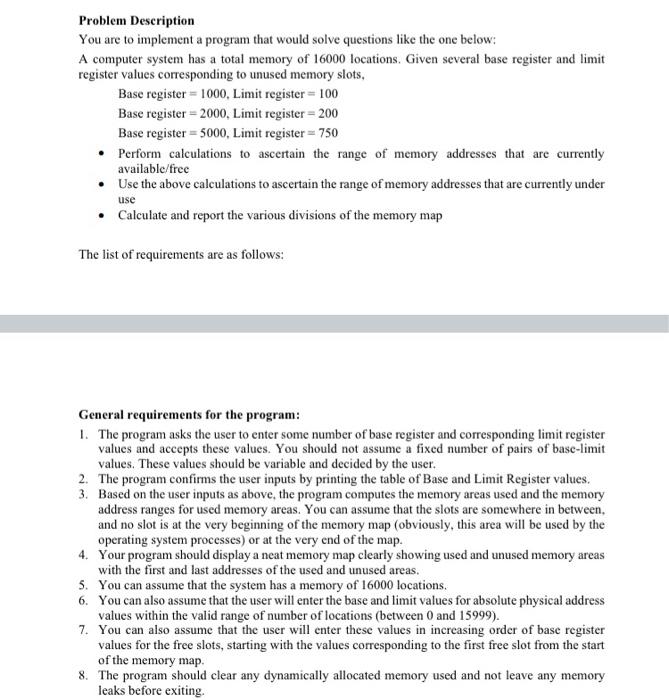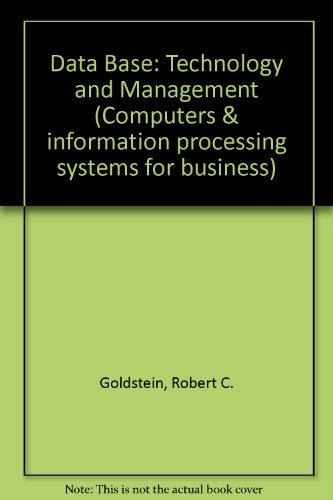
Problem Description You are to implement a program that would solve questions like the one below: A computer system has a total memory of 16000 locations. Given several base register and limit register values corresponding to unused memory slots, Base register = 1000. Limit register = 100 Base register = 2000, Limit register = 200 Base register = 5000, Limit register = 750 Perform calculations to ascertain the range of memory addresses that are currently available/free Use the above calculations to ascertain the range of memory addresses that are currently under use Calculate and report the various divisions of the memory map The list of requirements are as follows: General requirements for the program: 1. The program asks the user to enter some number of base register and corresponding limit register values and accepts these values. You should not assume a fixed number of pairs of base-limit values. These values should be variable and decided by the user. 2. The program confirms the user inputs by printing the table of Base and Limit Register values. 3. Based on the user inputs as above, the program computes the memory areas used and the memory address ranges for used memory areas. You can assume that the slots are somewhere in between and no slot is at the very beginning of the memory map (obviously, this area will be used by the operating system processes) or at the very end of the map. 4. Your program should display a neat memory map clearly showing used and unused memory areas with the first and last addresses of the used and unused areas. 5. You can assume that the system has a memory of 16000 locations. 6. You can also assume that the user will enter the base and limit values for absolute physical address values within the valid range of number of locations between 0 and 15999). 7. You can also assume that the user will enter these values in increasing order of base register values for the free slots, starting with the values corresponding to the first free slot from the start of the memory map 8. The program should clear any dynamically allocated memory used and not leave any memory leaks before exiting. Problem Description You are to implement a program that would solve questions like the one below: A computer system has a total memory of 16000 locations. Given several base register and limit register values corresponding to unused memory slots, Base register = 1000. Limit register = 100 Base register = 2000, Limit register = 200 Base register = 5000, Limit register = 750 Perform calculations to ascertain the range of memory addresses that are currently available/free Use the above calculations to ascertain the range of memory addresses that are currently under use Calculate and report the various divisions of the memory map The list of requirements are as follows: General requirements for the program: 1. The program asks the user to enter some number of base register and corresponding limit register values and accepts these values. You should not assume a fixed number of pairs of base-limit values. These values should be variable and decided by the user. 2. The program confirms the user inputs by printing the table of Base and Limit Register values. 3. Based on the user inputs as above, the program computes the memory areas used and the memory address ranges for used memory areas. You can assume that the slots are somewhere in between and no slot is at the very beginning of the memory map (obviously, this area will be used by the operating system processes) or at the very end of the map. 4. Your program should display a neat memory map clearly showing used and unused memory areas with the first and last addresses of the used and unused areas. 5. You can assume that the system has a memory of 16000 locations. 6. You can also assume that the user will enter the base and limit values for absolute physical address values within the valid range of number of locations between 0 and 15999). 7. You can also assume that the user will enter these values in increasing order of base register values for the free slots, starting with the values corresponding to the first free slot from the start of the memory map 8. The program should clear any dynamically allocated memory used and not leave any memory leaks before exiting







